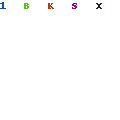Alate_One said:
There are a lot of distinguished historians that reject the holocaust. Do you really want this as your argument?
A lot of *distinguished historians*? Besides Harry Elmer Barnes? Name them.
Alate_One said:
The claim is:
| There’s no reason to doubt that Darwin successfully explained the small adjustments by which an organism adapts to local circumstances: changes to fur density or wing style or beak shape. Yet there are many reasons to doubt whether he can answer the hard questions and explain the big picture—not the fine-tuning of existing species but the emergence of new ones. The origin of species is exactly what Darwin cannot explain. |
The claim and support are
here.
Yorzhik said:
Yes you did. When you said "I realize some people think DNA is just like "code" but it really isn't... biology is analog" You are claiming that 4 symbols that can be combined to command physical things is somehow "analog".
I'm going to answer this alone since both you and Stripe seem to be confused on this point. Here is the problem. This is wrong. Adenine Thymine Guanine and Cytosine are NOT just symbols. They are chemicals and their chemical nature determines much of the genome's function.
Nothing I said specifies ATGC as *JUST* symbols (please note I'm saying they are symbols and also more than symbols). Nothing I said specifies that ATGC are not chemicals. Nothing I said specifies that ATGC are not chemical in nature and interact with the rest of the cell chemically.
The entire foundation of your post does not rebut what I said, and you aren't addressing the challenge being raised against common descent.
You cannot emulate the function of DNA by emulating only one of the functions of bases.
Yes and no. You can emulate parts of any code system that has discrete functions. And DNA has plenty of them. But of course the more you can emulate, the more you can understand. This neither rebuts nor addresses the challenge.
Example - Darwin's finches. They differ in the shape of their beaks. How is the beak shape made different? By how much a particular master control protein binds to a spot on DNA and how much protein is made by a specific gene. A tiny difference in that binding can change the amount of protein, a few hours more expression, creates most of the difference between the long beak of a cactus finch and the thick heavy beak of a ground finch.
The same kind of change created the human ability to digest milk as adults and produce amylase in our saliva. Regulatory changes are hard for scientists to detect because they don't operate as a simple code like codons and amino acids produced by them. The physical placement of regions of DNA inside of the cell is also important, some genes are close to one another, and others are not with proteins binding to them. The availability of specific regions of DNA to proteins is determined by the proteins binding to them and to the chemical modifications to the bases - epigenetics. You could model all of this in a computer theoretically but you would have to model all of DNA function as well as proteins and spatial organization, not just the order of ATGC.
Please, save yourself the time telling us how complicated the system is. No matter how complicated it is, it isn't magic.
Mind you this entire argument is basically for you to try to say, "see a computer scientist can understand DNA, therefore his opinion matters and evolution must be wrong." None of which follows from your argument, even if it were accurate. :dizzy:
No. The point of my argument is to say that DNA isn't magic. We can emulate enough of it to show that random mutations plus natural selection will not result in common descent.
So the question remains: Can you name a breakthrough that was made because they didn't view DNA as code?

